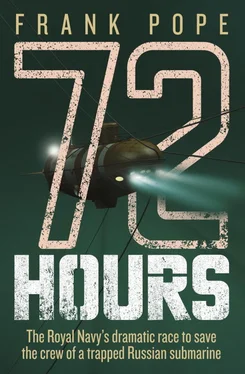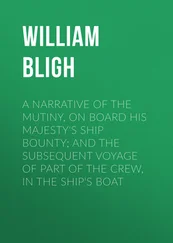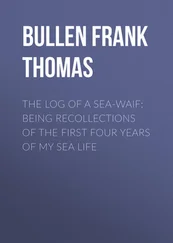Lift by lift the crew began to be recovered, in batches of eight, but the sea was growing rougher. The wire cable holding the bell was unable to take the strain of being jerked taut by the building waves, and it began parting. It was only when the captain left the Squalus – the last man to do so – and had climbed into the bell that someone noticed that it was dangling from just a single strand of wire. If that broke, there would be no chance of finding the bell again before the looming storm was upon them. They had to chance it. They filled the bell with just enough air to make it buoyant, and the deck crew gingerly took in the line, terrified that an unseen wave would cause the ship to lurch and snap the remaining strand. Foot by foot the bell drew closer to the surface, until finally a swimmer could jump in and secure another line to the top of the bell. All 33 survivors of the original flooding survived. From that day on, submariners were no longer expected to save themselves or die quietly. They now had hope of rescue from the surface.
The type of rescue bell that had saved Squalus ’s men 65 years before was still an active part of Commander Kent Van Horn’s arsenal of equipment – Turkey and Italy still used it as their main rescue system, after all – but it wasn’t right for this job. And although all NATO submarine rescue craft could, with delicate handling, just about mate with Russian submarines using the system that Momsen had devised, AS-28 did not have the special hatch required.
Van Horn rapidly came to the same conclusions as the UK had done about what equipment the Kamchatka situation required: a Remotely Operated Vehicle. It would be quickest to deploy, and would be better able to make the tight movements that might be required to disentangle the stricken submersible. The decision made, he pulled together an equipment list, and it totalled around 78 tonnes of kit. Now he needed to get it to Russia. While Air Support services began tracking down aircraft for him, he began planning the later stages of the deployment.
In every exercise speed was the critical element. Now, in a real-life situation, Van Horn was pulling out all the stops to shave off the minutes. He decided to separate his teams into three different groups that would work in parallel to offload the aircraft and mobilise it on the vessel they were assigned. Thinking ahead to mounting equipment on the deck of the Russian ship, he noted that if welding was taking too long he’d be prepared to lash the kit in place with grips and tie-downs rather than the usual welds. Anything to save precious time.
Friday, 5 August
SS + 29 h 30 mins
10.00 UK – 13.00 Moscow – 22.00 Kamchatka
Workshops of Rumic Defence Ltd, Renfrew, Glasgow
Stuart Gold was going through the spares kit of the UKSRS Scorpio ROV, double-checking the replacement circuit boards, cables and Duck tape supplies, when the phone went in the small office in the corner of the workshop. He made a last mark on his checklist, then paced over to the desk.
It was Martin Bully, his long time boss. ‘Looks like you’d better get yourself at least thinking about mobilising Scorpio, Stuart. There’s a possibility that you’ll be off to rescue the Russians. Best get on the phone, see who’s about,’ he said.
No problem, thought Gold. Scorpio was never more than a few hours from being operational, and right now she was fully ready. Six weeks before she had been out in Italy for the main NATO exercise. A couple of tiny problems had cropped up there, and since then he’d been firing her up every couple of days as normal, checking the electrics and the hydraulics, and everything was shipshape and ready for playtime with the Swedish and Norwegian navies.
Just as the US Navy had taken time to accept that submariners could be rescued, the existence of the UK’s Submarine Rescue Service was not a given. In fact, when the British submarine HMS Poseidon sank in the North China Sea in 1931, the Royal Navy created a hard-set policy that submariners should save themselves, not rely on others.
Poseidon was on exercise on the surface in perfect visibility when she somehow collided with a Chinese vessel. Half of the crew managed to scramble out before the submarine sank to the seabed 40 metres below, but the rest remained trapped inside. Knowing they were far from help, eight men had donned their Davis Submarine Escape Apparatus and opened the hatches to the sea. Two of the men never made it to the surface and one died soon after reaching it, but the other five were proof that self-rescue could work. The fate of the men who remained inside is not clear, although the Chinese Navy may now know more: in 1971 they secretly salvaged the Poseidon , but have yet to respond to the UK Ministry of Defence’s inquiries for information about what was found.
The successful use of the DSEA equipment instilled a firm belief among Naval commanders that self-rescue was the best chance for submariners. All British submarines were modified to include escape hatches with fast-flood valves, and crews were ordered not to wait for outside assistance in the event of an accident. Until then, submarines had been built with external valves so that high-pressure air could be injected inside by surface salvage vessels, but, in line with the new policy, these were now welded shut.
It was eight years before the strategy faced its first big test. In June 1939, just one week after the successful rescue of the crew of USS Squalus with Momsen’s bell, the newly constructed HMS Thetis made her way into the middle of Liverpool Bay for her test dive. Some of those who’d built her, from the company Cammell-Laird, had been invited to come along for the historic journey. Instead of her design crew of 53, she had 103 on board. The spectators were supposed to disembark on to a waiting tug before the submarine submerged, but when things were deemed to be going well, they were invited to stay for the show.
Thetis herself seemed reluctant to dive, however. Her captain, Lieutenant Commander Bolus, ordered the front torpedo tubes to be flooded to encourage her nose to sink, but this seemed to make little difference. Puzzled, he ordered the torpedo room to check that the tubes had in fact flooded.
Torpedo tubes have two doors, one on the inside through which the torpedo is loaded, and one that opens to the sea through which it is fired. One or the other must be shut at all times to keep the seawater out. When the crewman checked the indicator for the outer door it showed open, but it was possible that there was a fault. Owing to the obvious danger of mistakenly opening both doors at once, the designers had included a small valve which could be used to test if there was in fact water inside. A crewman opened this ‘test cock’, but there was not even a dribble of water. The outer door indicator must be faulty, he concluded. Since the tube was dry the outer door must still be shut. There was no way he could know that a fresh coat of enamel paint inside the torpedo tube had blocked the inlet for the test-cock. He opened the interior door and Poseidon made his entrance.
In seconds tons of seawater had flooded the forward compartment, seconds that coincided with a surge of power from Thetis ’s engines and a full-down setting on the dive planes as the captain tried to get his craft to dive. This time she responded dramatically and Thetis plunged downwards. The crew at the bow couldn’t get the watertight doors of the first compartment shut in time, and the sea had crashed through into the second compartment before they finally managed to contain it. Seconds later, Thetis hit the seabed 48 metres below.
Читать дальше












